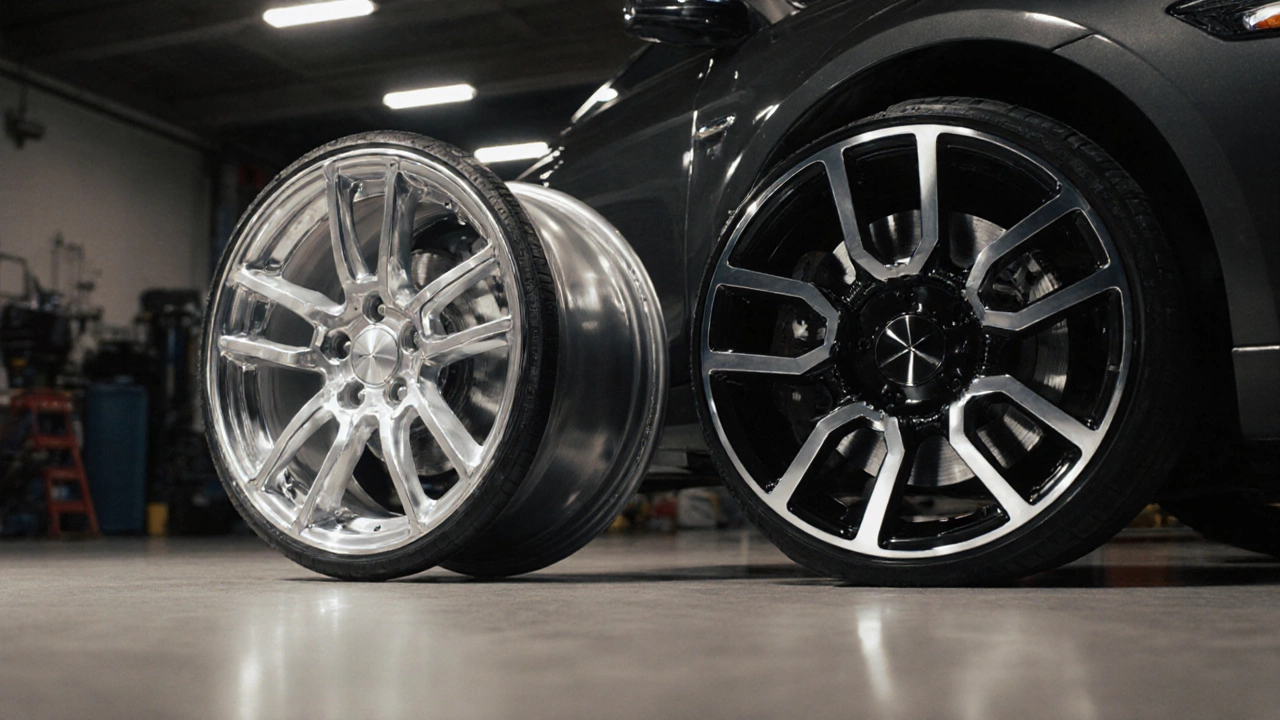When working with Aluminum Wheels, lightweight, corrosion‑resistant rims made from an aluminum alloy that boost both looks and handling. Also known as Alloy Wheels, they are a popular upgrade for many car enthusiasts. Pairing them with Wheel Spacers, thin plates that push the wheel outward to improve stance and track width can change the visual profile, but it also influences Tire Wear, the rate at which tread degrades due to friction and alignment. A proper Wheel Alignment, adjustment of camber, caster, and toe to ensure the wheels track correctly is essential to keep those new rims performing at their best.
Aluminum wheels are prized for their low unsprung weight, which means the suspension can react faster to bumps and cornering forces. This results in sharper handling and a more responsive feel on twisty roads. The lighter mass also reduces rotational inertia, so the engine can spin the wheels up quicker, giving a noticeable lift in acceleration. For daily drivers, that benefit translates into smoother rides and less strain on brakes, while track owners enjoy the edge that lighter rims provide during high‑speed maneuvers.
First, check the bolt pattern and offset of your vehicle. The bolt pattern (e.g., 5×112) defines how the wheel bolts to the hub, and the offset determines how far the wheel sits inside or outside the wheel well. Mismatched offsets can cause the tire to rub against the fender or suspension components. Second, evaluate the load rating. Aluminum wheels come in various strengths; you need a rating that meets or exceeds your car’s weight and any additional load from passengers or cargo. Third, think about the finish. Matte black, polished silver, or brushed finishes each have different maintenance needs and resistance to brake dust.
When you add wheel spacers, you’re essentially widening the track width, which can improve stability during cornering. However, spacers also increase the lever arm on the wheel bearings, potentially accelerating wear if the bearings aren’t robust enough. That’s why many experts recommend re‑checking your wheel alignment after installing spacers. A proper alignment not only keeps the tires wearing evenly but also prevents pulling to one side, which can be dangerous at higher speeds.
Another consideration is tire choice. Since aluminum wheels often have a larger diameter, you might need low‑profile tires to maintain the overall diameter and speedometer accuracy. Low‑profile tires provide better grip and steering response but can be harsher on rough roads. Balancing performance and comfort is a personal decision, and many drivers experiment with different tire compounds to find the sweet spot for their driving style.
Installation matters, too. While many enthusiasts bolt on new wheels themselves, it’s wise to have a professional torque the lug nuts to the manufacturer’s specification. Over‑tightening can warp the wheel hub, while under‑tightening can cause the wheel to wobble. After installation, a quick tire pressure check ensures you’re not starting with an uneven load, which would affect both handling and tire wear.
Maintenance is straightforward but essential. Aluminum is prone to oxidation if not properly sealed. Regular washing with a pH‑balanced car shampoo removes brake dust and road grime that can pit the surface over time. Periodic application of a quality wheel sealant adds a protective layer, making future clean‑ups easier and preserving the finish. If you notice curb rash or scratches, many shops offer refinishing services that can restore the wheel’s original look.
Legal compliance can’t be ignored. Some regions have restrictions on wheel width, offset, or the use of spacers, especially if they affect the vehicle’s safety or cause the tire to protrude beyond the fender line. Always check local regulations before making dramatic changes, and keep documentation of the wheel specifications in case you need to prove compliance during inspections.
Finally, think about how aluminum wheels fit into the broader customization picture. They pair well with body kits, performance suspensions, and even brake upgrades. A cohesive look—matching wheel design to the car’s overall aesthetic—makes the effort worth it. Whether you’re after a sleek street stance or a track‑ready setup, the right set of aluminum wheels can be the centerpiece of your build.
Below you’ll find a curated collection of articles that dive deeper into each of these topics— from DIY installation guides and spacer effects on tire wear to detailed alignment tips and finish maintenance tricks. Explore the posts to get the hands‑on advice you need for a successful aluminum wheel upgrade.

Discover the pros and cons of aluminum versus alloy wheels, covering weight, strength, cost, corrosion resistance, and brake cooling to help you choose the best fit for your vehicle.